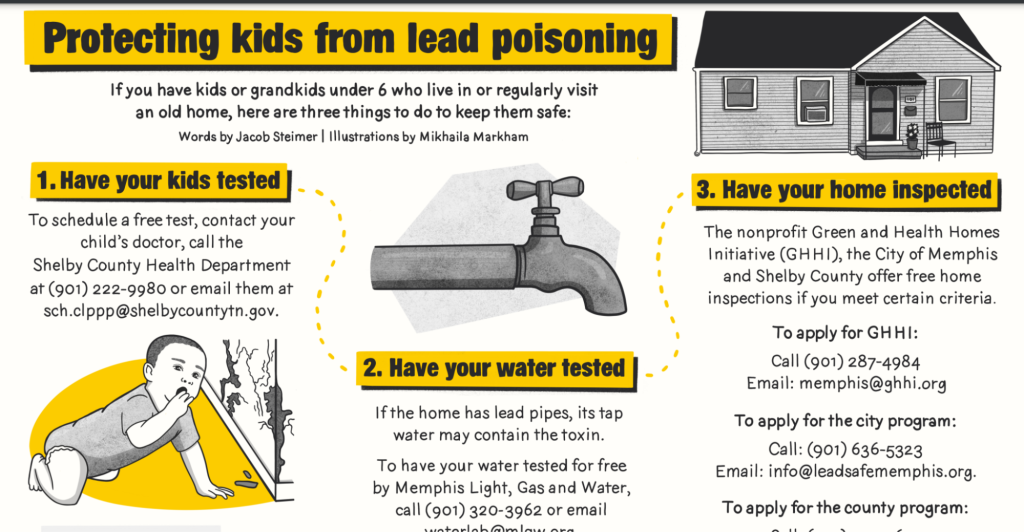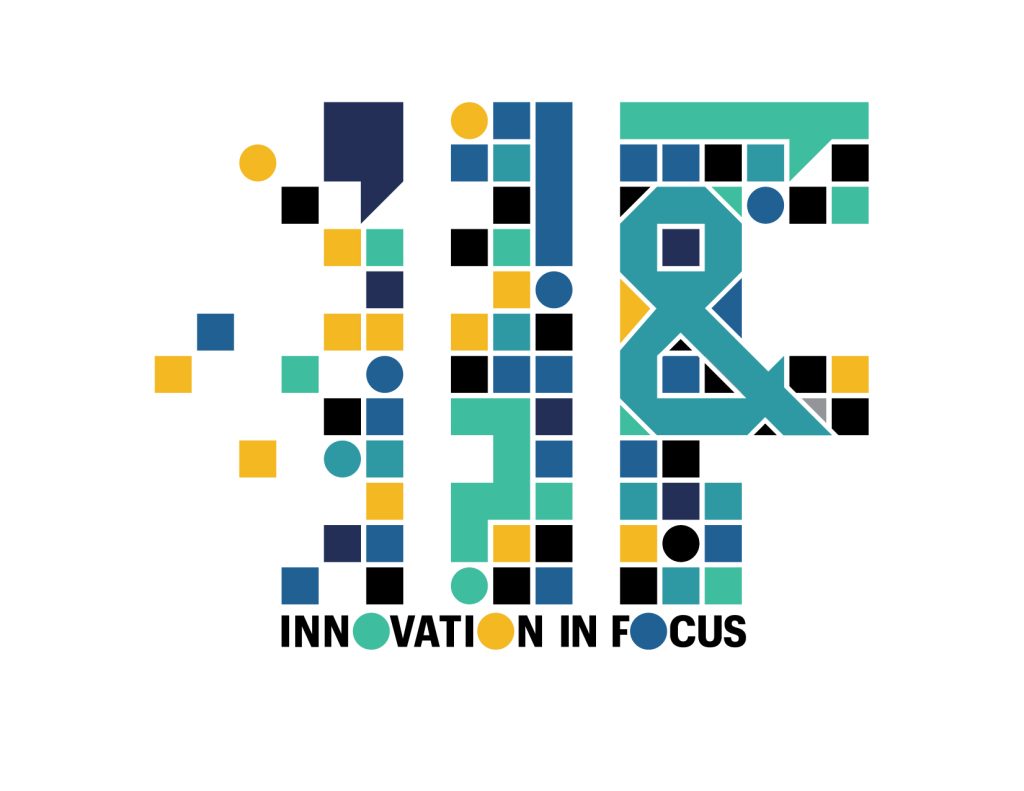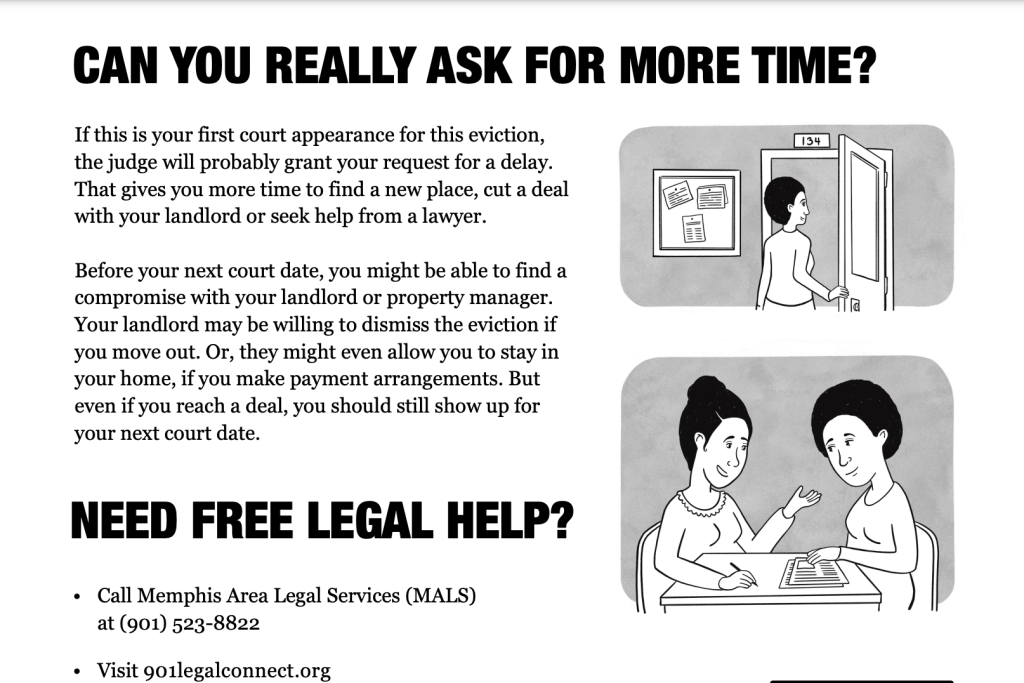
Creative ways to connect your community with resources
A conversation with Adrienne Johnson Martin
A Memphis-based nonprofit newsroom, MLK50: Justice Through Journalism aims to engage, inform and equip community members to take action. One way they do that is through several resource guides that they share on their website and distribute as printed handouts and postcards.
The guides have ranged from tips for those facing eviction to what to know before you speak with a journalist.

The Innovation in Focus team spoke with MLK50’s co-executive director of editorial Adrienne Johnson Martin to learn more about how they compile these guides and think about their distribution strategy.
Lytle: How did the idea for your resource guides come about? Was that a need that you saw in your community?
Martin: It really was grounded in the community and observations that the reporters made. For instance, the guide we created around navigating eviction court came from our housing reporter going to eviction court to do reporting in that area, then noticing how many people would come in and would be evicted and not know that they were just evicted. They just didn’t know how it worked, and they didn’t know that by just answering one question — which was something like, “Do you owe this money?” — if you said yes to that, you were evicted. And people didn’t know that.
Lytle: What does it look like to track the impact of these guides? How are you tracking whether people are using it or what feedback they have?
Martin: For the eviction one, there was one question where you could ask for a continuance and get another like 10 days, which could mean the difference of you working out something with your landlord. So that was the question we tracked: How many people asked for the continuance? Now, the state recently got rid of that window. So we have to update our guide and think of another way to track that.
Lytle: Did you print out all your guides and hand them out to people like you did at the eviction court, or did it depend on the topic?
Martin: We’ve tried different things. Earlier this year, we did a big series on lead. For that one, we did postcards that we directed to neighborhoods with older homes and gave information there. We also were at different summer events. There were a number of Juneteenth events in Memphis, so we set up tables and gave that out to people there. I’d say the lead guide and the “don’t talk to journalists until you read this” guide are probably the most popular that get passed around the most. So we just create stacks of them and give them out. Part of the feedback that we got from the early events in June from people in the community and organizers was to translate them into Spanish, so now we have translated those documents.
I would say the key thing is really connecting with other local organizations. For the distribution and promotion part of it and also for the expertise. Even with the eviction one, we went to lawyer-related groups, rental groups, to just fact check and ask: What else do people need? When you’re on the ground, they’re asking you questions, what do they not seem to know? What should they know? That really helps beyond the reporting to make sure that the resource can be as rich and helpful as it can.

Lytle: Tell me a little bit more about the thought process of compiling all the guides on one page on your website.
Martin: Once we realized we were sort of in the business of resources, we wanted them in one place. And for all our material, we have Creative Commons, so everything is free. So we wanted to make it so that people could download it if they wanted to. But it’s also something that we can always push on social and just continually update and share that they’re there. That’s something that we always return to in our social media strategy: always making people aware of it and attaching it to different events or different things that are happening in the community. I think there’s always a new audience discovering it because people don’t always come to the page, or they come from different places.
Lytle: So they might come to you for your guide on lead in communities, but then they’ll explore the other resources you have.
Martin: Because a lot of these things are related, right? If you’re having a problem with housing, there might also be a problem with food access. So a lot of people might come in for one thing, and then say, wait, I also have to deal with that. And then they get everything they need.
Lytle: Do you have any advice, or what does your workflow look like for updating these guides?
Martin: That’s a tough one, especially if you’re printing it out. I would say: As hard as you promote the guide itself, you should promote the update. And the easiest path is to keep your resources more inside. If you’re outsourcing a lot of the work in terms of the design and all of that, it gets more expensive, and a lot of newsrooms may not have the resources for that. If that is a factor, then simplify it, so the update is just in-house. It’s not costing you anything but time. Alternatively, you could make a PDF version and then a different online version so then, if there’s something that’s volatile, you can at least change it on the website. And then, wait a minute to change it on the PDF.
Lytle: In the reporting process, how do you determine that something is worth creating a guide for?
Martin: Our basic framing when we started out is to always think about engagement. Is there a possibility of engagement? And engagement can mean a lot of things, right? It could be a guide, it could be an event, it could be whatever. But if you’re always thinking that way, then you are looking at your material differently. I also think it’s when a reporter is digging into a story and they start to say: Oh, this is really complicated. Or, there’s a lot of pieces to this. Or, they start writing a story and it goes from 700 words to 1,500 words. That’s when you start thinking about: is there something here that needs to be broken down further?
Lytle: Is there something new that you want to try, or something that you want to build upon when it comes to how you’re doing these guides?
Martin: We’re thinking more and more about distribution. Like how to target it, how to get it to the right people. What is the best mode? Is it 8.5″ by 11″? Would it be helpful as a magnet? The other thing we think about is: Who else should we be telling this to? When should we tell it? And if we’re going to go to this new audience. What do you do differently? Or how do you take the same thing and make it a different thing for a teenager? For instance, how youth should engage with journalists is a little different than how an adult would. So now we’re looking at that guide and saying, “Okay, do we need to do this a little differently to explain to them what their rights are and how they should navigate that.”
Lytle: Any other advice for someone who is starting to create resource guides for the first time?
Martin: My general advice is don’t be afraid of doing it and not doing it right because you can do it again. You can fix it. If you’re not sure, don’t go full throttle and just try it. Maybe do a simple printing of like 50 or 100. It is a process of figuring it out and how it should work. And it’s completely, absolutely worthwhile. I think everybody should be doing it. It’s gonna be a little different in every community in terms of reception, distribution, fine tuning it, and all of that, and it takes a minute to figure it out. But I think ultimately, as you’re figuring it out, what you’re really doing is refining your journalism and understanding your city a little better and understanding your community a little better, and that is an incredible return on investment.
Editor’s Note: This interview has been edited for clarity and brevity.

Sign up for the Innovation in Focus Newsletter to get our articles, tips, guides and more in your inbox each month!
Cite this article
Lytle, Emily (2024, Nov. 19). Creative ways to connect your community with resources. Reynolds Journalism Institute. Retrieved from: https://rjionline.org/news/creative-ways-to-connect-your-community-with-resources/

